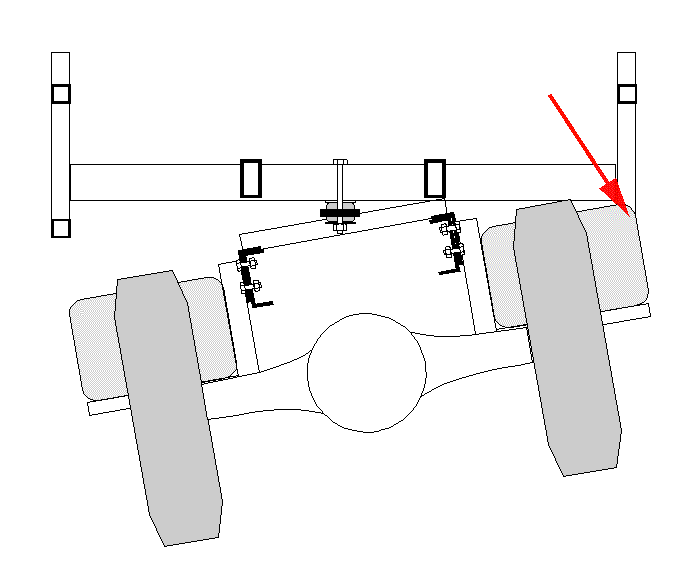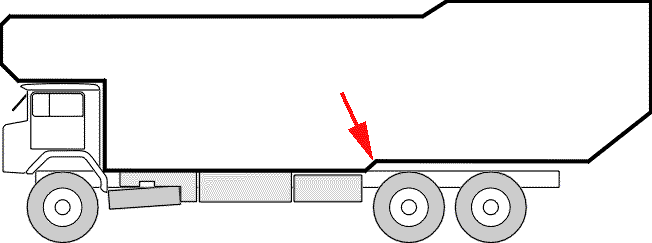| Let's back up a little now.
As you can see in the first three drawings at the top of this page
the body only appears to be mounted at one point, well it's actually
mounted at three points so let's go over the idea behind his.
If you have two flat objects tigthly mounted together
and you bend one of those objects what will happen to the other
one? It will either bend as well or the mounting points will break.
With a motor home body we have the same setup, both the body and
the chassis are usually flat objects and they must be connected
for obvious reasons. Unfortunately the chassis WILL flex. It's the
old "irresistible force and immovable object" scenario,
the chassis is the irresistible force and we'd like the body to
be the immovable object. Something has to give.
One option is to let the body flex as well and
on many body types this is valid, trouble is with a motor home we
have cupboards and doors and things that won't take kindly to being
twisted.
When I started designing this I got to thinking
about my camera's tripod. It struck me that, no matter what terrain
it was placed on it was always steady. Think about it, a four legged
stool is always rocking whereas a three legged stool will be firm
no matter what the floor is like. This is because you can always
draw a flat plane though any three points, but not any four points.
As is happens, when I started talking to those in the know, I found
that this is indeed the method used for off-road vehicles.
Let's look at some drawings. In the first we see
our two flat objects connected at four points. Let's say the top
object is our motor home body and the bottom one is the truck chassis.

So far so good. Now let's apply some twisting to the chassis, as
stated above two things can happen, the mounting points can break...

or the body can bend.

However if the body is only mounted and one point on one end, and
that point can pivot, then the chassis can do what it likes without
affecting the body.

Note that the chassis is connected, and considered
stable, at the front, this is arbitrary on my part. One needs a
reference point and the front is as good as the middle or the rear.
This reference is where the body will be firmly mounted to the chassis.
This brings me to another point.
As mentioned above, the difference in angle between
the front and rear of the chassis was 10 degrees. I measured the
front and rear because I decided to mount the body firmly at the
front end with a pivot at the rear, therefore I had to allow for
10 degrees. It seems valid however to place the firm mounting in
the centre with two pivots at each end. In this case you would have
two lots of 5 degrees rather than one 10 degree angle to contend
with.
So much for the theory but how does one actually
implement this three point mounting?
|










